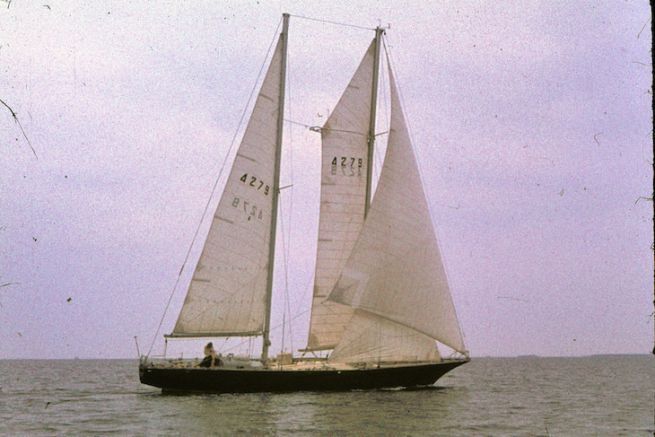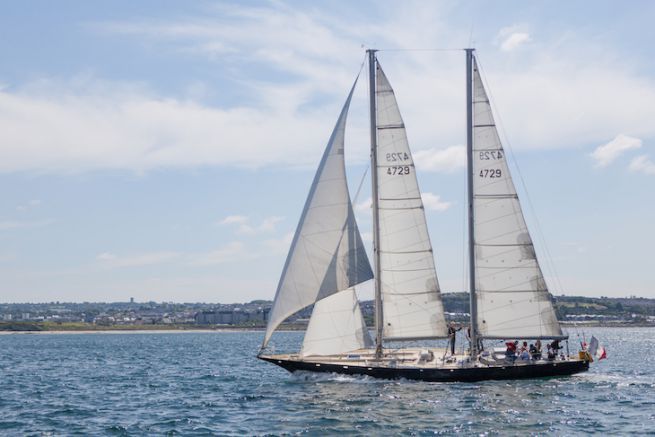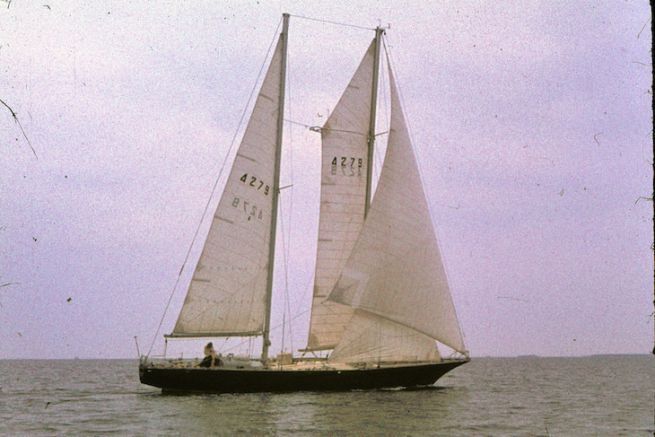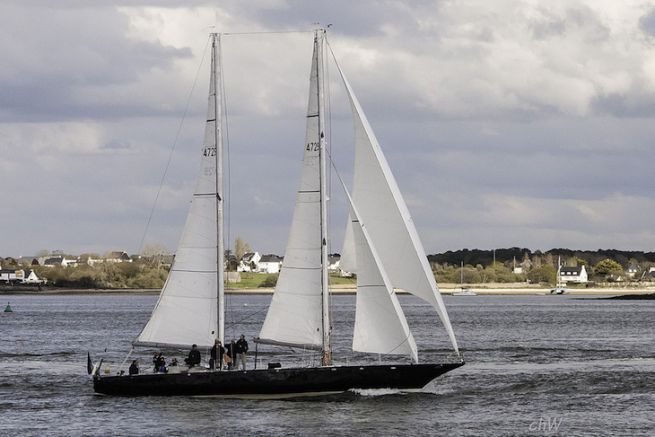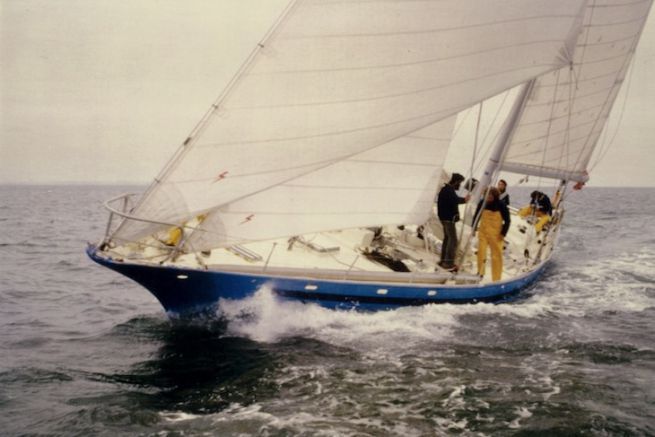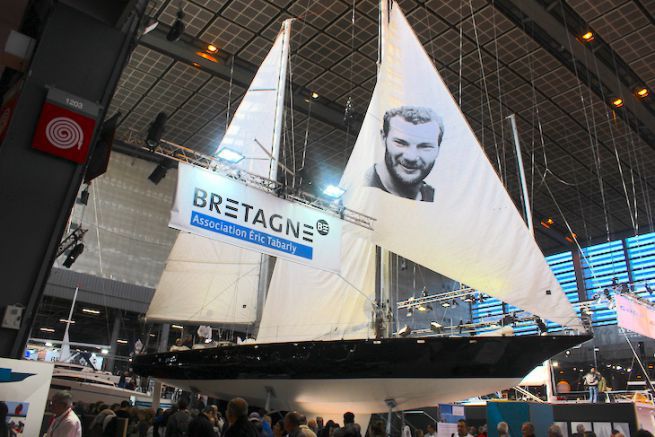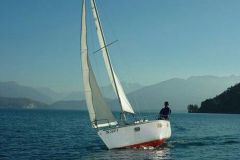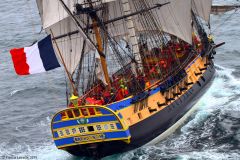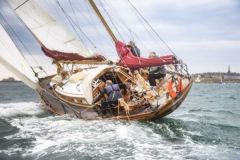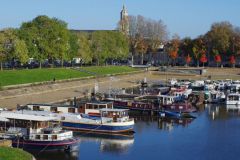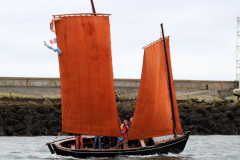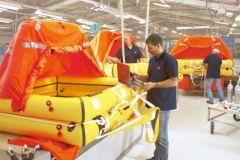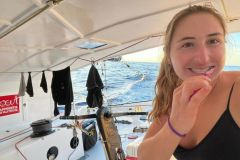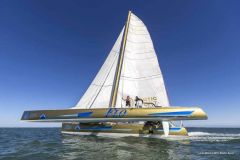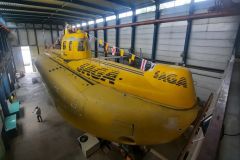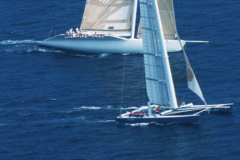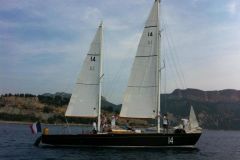Eric Tabarly was not only a great sailor, he was also a visionary. When he designed Pen Duick III in 1966, a 17.45 m schooner, he had in mind a double programme: taking part in the 1968 Transat solo sailing from Plymouth to Newport, but also sailing the English RORC (Royal Ocean Racing Race) with a crew and thus designing a boat to meet the English standard. The RORC is a British yachting club founded in 1925, and the main organiser of UK offshore races including the famous Fasnet race as well as the Admiral's Cup
Unlike Pen Duick II made of plywood, Pen Duick III will be made of duralinox, an aluminium alloy used very little in cruising races, but allowing to gain in lightness while ensuring the solidity of the hull. However, in solitaire, lightness is an important ally. The schooner rig (usually made up of masts, but up to 7) made up of a foremast and a mainmast also makes it possible to divide the sail, thus making manoeuvres easier for a single man. It is the only boat of the entire 1967 fleet to have the configuration of a schooner with two masts of identical height. The cockpit will be short and narrow while the double-chine hull, designed by Éric Tabarly, is a small revolution. It was one of the first ocean-going boats to glide downwind in a strong breeze.
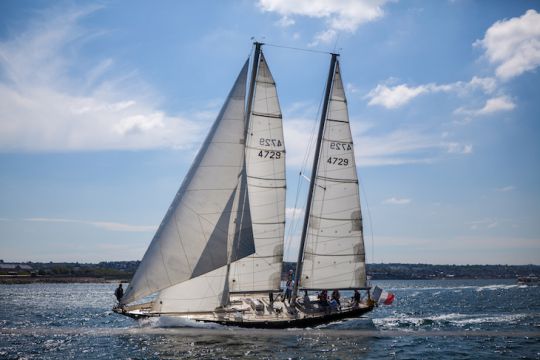
With its two bilges, one with a sharp angle and the other rounded, its bow with a guibre to avoid the addition of a bowsprit, as explained by its designer, and its ballast consisting of a thick 8 cm thick aluminium sail extended by a trimmer and a bulb in the shape of a torpedo, this hull is innovative. It will also be tested in the Nantes ENSM hull basin, as will the ballast, six profile models of which have been tested in the basin.
Aesthetically, Pen Duick III catches the eye with its imposing 4.21 m beam master, its tulip hull at the front and its thin ends, characterised by a small transom. His schooner rigging was brought up to date by the sailor, although it had been abandoned for a long time, but above all, its advantage will be its foresail, whose surface is not taken into account by the RORC, institution in charge of establishing a system of calculations in order to allocate handicaps so that various boats can race together. The sailboat has a black hull and has two shearsails. One small (36 m2), fully battened, is fitted to the beam (a succession of movements bringing the sail closer to the axis of the wind), while the second, not battened, but sent thanks to the boom (double boom), has a free and very large beam (93.60 m2). This evolutionary rig allows her to use the large foresail with free edge for the beam and the tailwind and the small batten foresail for the upwind.
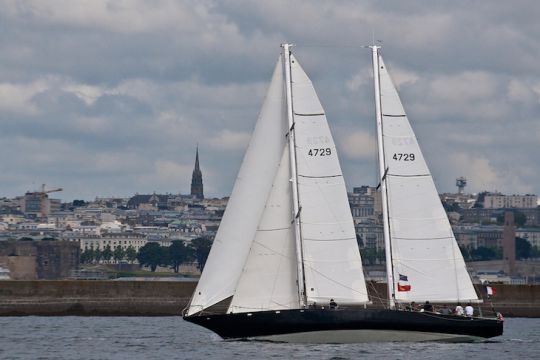
Built at the Ateliers et Chantiers de La Perrière in Lorient, the yacht was launched on June 3, 1967. But in the end, the great sailor will never use Pen Duick III to race solo in the Transat, preferring Pen Duick IV, the first large ocean-going multihull.

 /
/ 